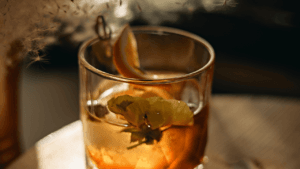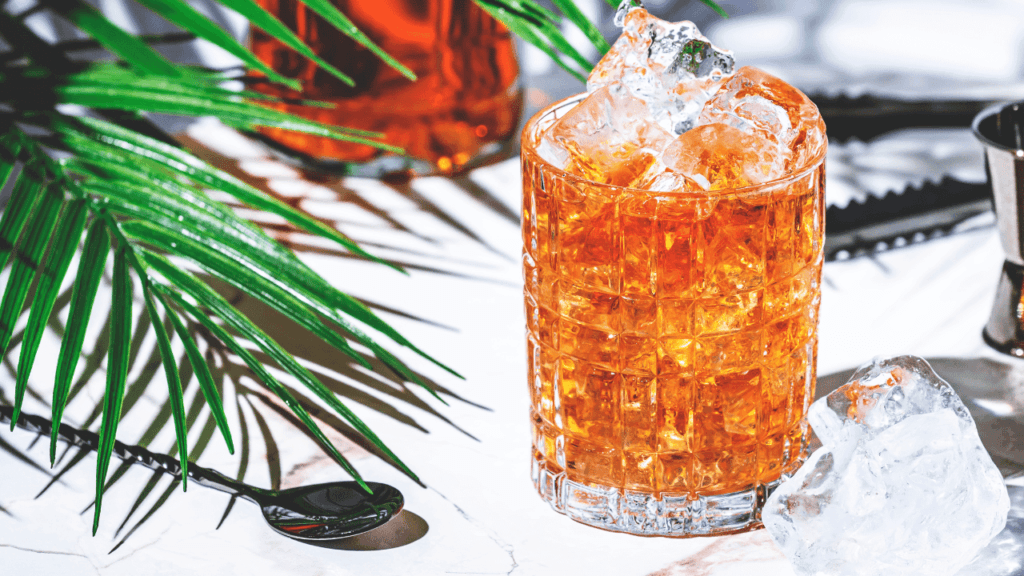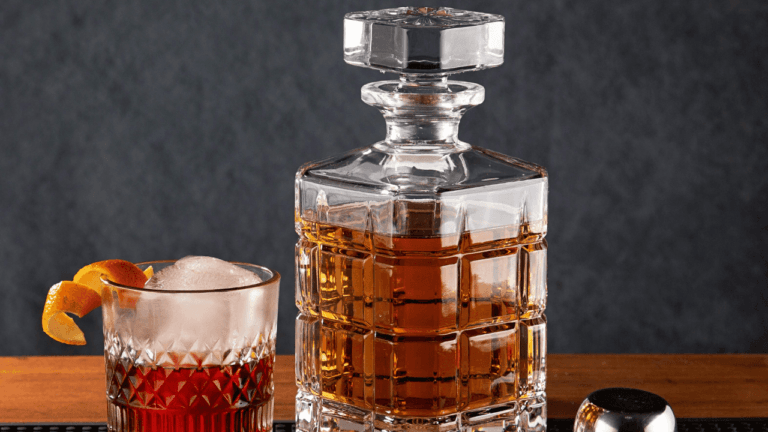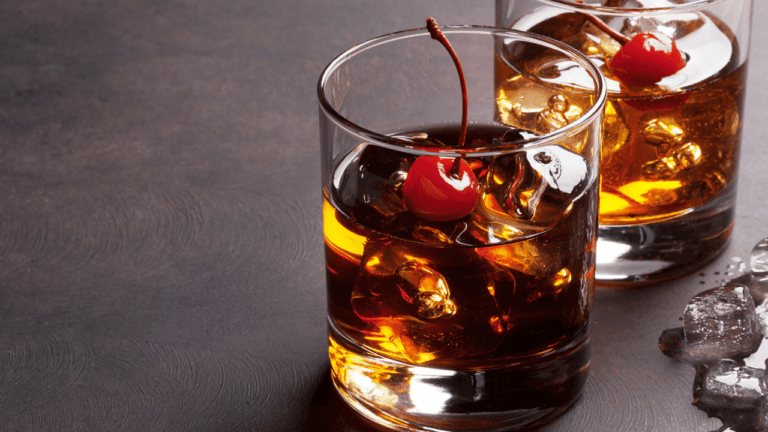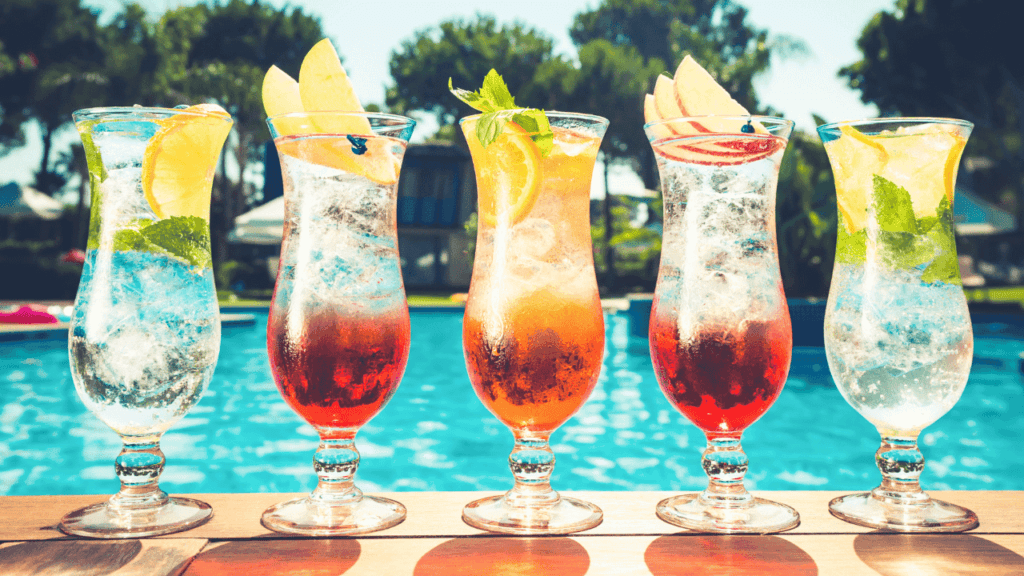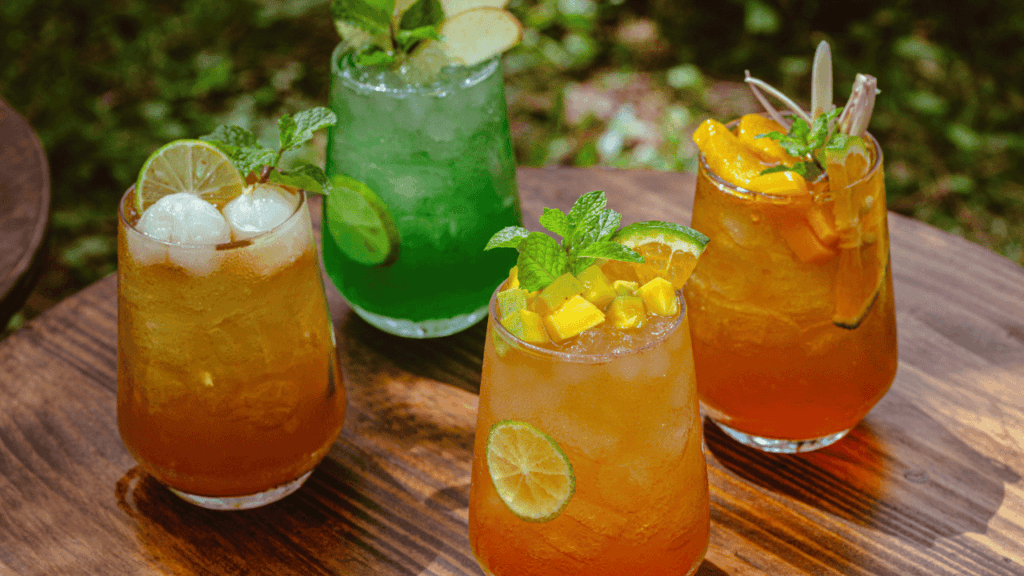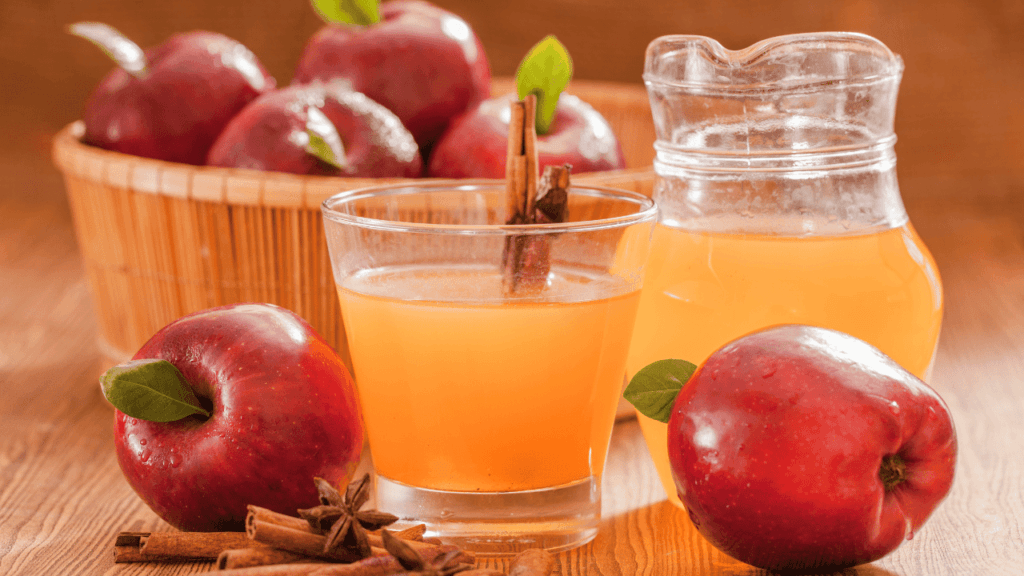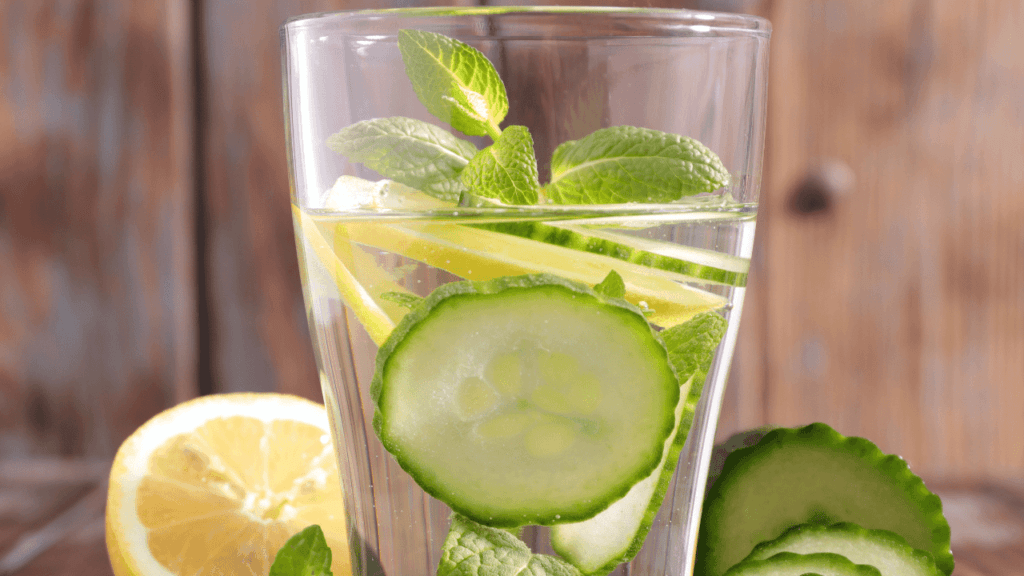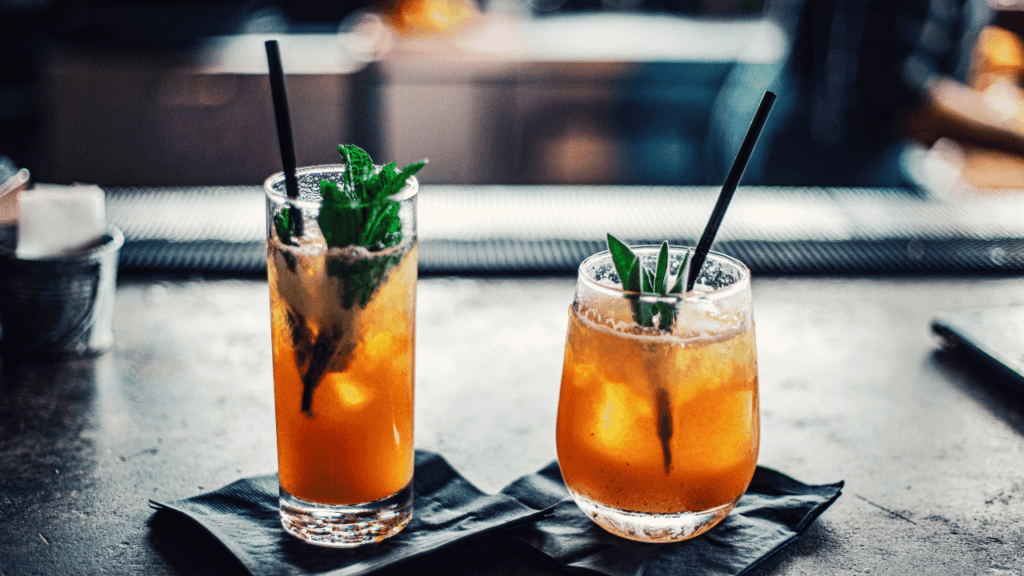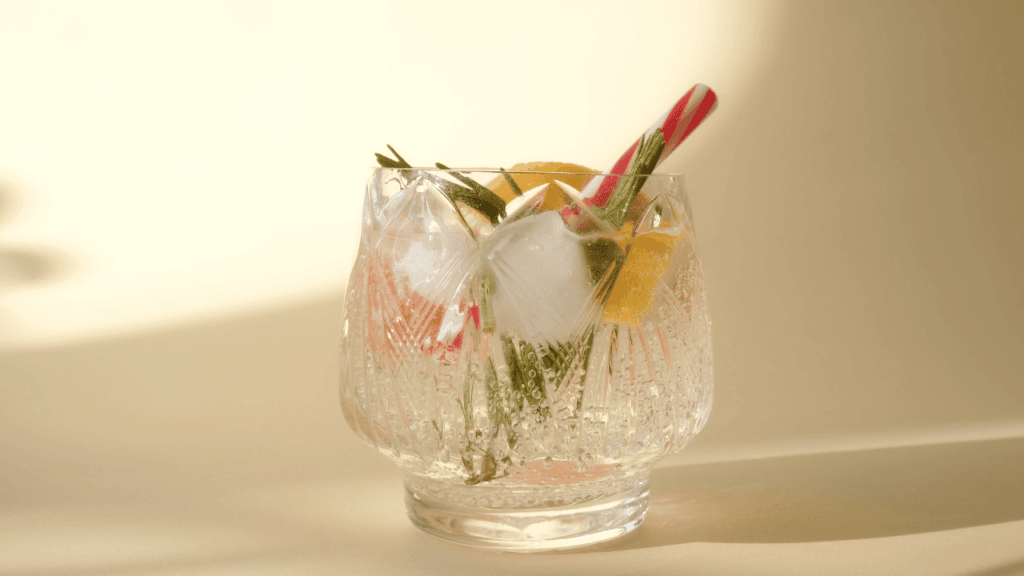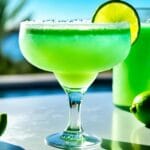The storied past of Scotch whisky intertwines with societal shifts and technological advances, yielding a rich tapestry in the history of Scotch cocktails. From the mist-veiled hills of Scotland to the bustling cocktail bars of the modern era, the evolution of Scotch mixology reflects a journey of innovation, culture, and taste. Remarkably, France’s penchant for Scotch over their native Cognac echoes the global esteem for this centuries-old spirit, whose roots can be traced back to the 18th century with the commercialization of Scotch whisky production.
At the heart of this evolution is the iconic Coffey Still, introduced in 1831, revolutionizing whisky production with newfound efficiency and consistency. The pivotal 1823 Excise Act granted Scotch whisky a steady platform for proliferation, leading to its transcension from a commoner’s drink to the zenith of upper-class sophistication. As whisky anchored itself in the salons and drawing rooms of the elite, the iconic Scotch-based drinks of today began to emerge, some taking solace during America’s dark days of Prohibition, invigorating a thirst that spurred Scotch whisky imports.
Scotch’s narrative is not without its ebbs and flows, as it faced a decline towards the end of the past century, only to resurge with fervor as millennials rediscovered its charms. The rise of whisky tourism and subscription services like the Taster’s Club further illustrate the adaptive renaissance of Scotch whisky, which, along with the burgeoning appreciation of regional varieties, shape the Scotch experience. It is against this historical backdrop that Scotch cocktails such as the Rob Roy, Penicillin, and Rusty Nail have become mainstays in the pantheon of mixology.
Key Takeaways
- The history of Scotch cocktails is tied to the spirit’s evolution from a medicinal brew to a global mixology cornerstone.
- Technological advances like the Coffey Still and regulatory milestones such as the 1823 Excise Act played crucial roles in Scotch’s trajectory.
- Prohibition in the USA inadvertently fueled the rise in popularity of Scotch whisky as a desired import.
- Changing tastes and cultural movements, such as the millennial resurgence and whisky tourism, have rejuvenated interest in Scotch.
- The differentiation of Scotch regions and the aging process contribute to the distinct flavor profiles that charm connoisseurs and cocktail enthusiasts alike.
- Signature cocktails like the Rob Roy and Penicillin showcase the versatility and enduring appeal of Scotch whisky in mixology.
- The craft of cocktail-making and the celebration of classic concoctions have been significantly influenced by celebrated bartenders and evolving consumer preferences.
The Birth of Scotch: A Distilled History
The narrative of Scotch whiskey is steeped in a rich history, dating back over 500 years in the Scottish Highlands. This distilled spirit, originally referred to in Gaelic as ‘uisge beatha’ or ‘water of life’, has evolved to become a cornerstone in the world of spirits, influencing Scotch drink history profoundly.
The earliest recorded instance of whisky production is found in the Scottish Exchequer Rolls of 1494, noting “eight bolls of malt to Friar John Cor wherewith to make aquavitae”, evidencing the long-standing tradition of Scotch production. Key legislative milestones have shaped the production and distribution of Scotch, cementing its status globally and influencing the culture of Scotch whiskey cocktails. To learn more about these milestones, explore the story of Scotch.
Beginnings in the Scottish Highlands
The distilled essence of Scotch began with modest production in monasteries, with 1494 marking its first historical mention. By 1690, the Acts of the Scottish Parliament documented the existence of distilleries like Ferintosh. These initial distillation activities laid the groundwork for Scotland’s iconic whisky industry.
Legislation and Standards: The 1909 Definition
The evolution of Scotch production was significantly influenced by legislation, particularly by the Spirits Act of 1909 which rigorously defined Scotch whisky. This act distinguished Scotch from other spirits and established stringent regulations guiding its production based on ingredients, distillation, and aging, creating a blueprint for maintaining the unparalleled quality Scotch is known for today. This legal framework was vital for preserving the integrity and identity of Scotch, fostering its mammoth role within the Scotch cocktail origins.
Blended Scotch whisky, which remarkably became the best-selling category globally, owes much to the regulatory environment that encouraged innovation while protecting tradition. Such regulatory frameworks have not only supported the industry’s global standing but have also ensured that Scotch remains at the heart of the evolving cocktail culture.
| Year | Legislation | Impact on Scotch Whisky |
|---|---|---|
| 1644 | Excise Act | First tax on whisky distilling implemented |
| 1823 | Excise Act | Formal taxation structure for distilleries |
| 1909 | Spirits Act | Standardized definition and quality measures for Scotch |
History of Scotch Cocktails and Prohibition and Expansion Scotch in the New World
The 1920s marked a pivotal era for Scotch as American Prohibition reshaped the beverage landscape, inadvertently enhancing the allure of Scotch whisky. Despite severe restrictions, the clandestine appeal of Scotch maintained its momentum in underground circles and speakeasies, laying foundational elements for what would later become a significant aspect of Scotch cocktail culture.
American Prohibition and Its Exhaustive Impact on Scotch Whisky
When the Eighteenth Amendment was enacted in 1920, it spurred a surge in illicit activities surrounding Scotch whisky. Ironically, this period of legal restraint propelled Scotch-based drinks into the spotlight as opulent symbols of rebellion against Prohibition’s confines. This era saw a stark transformation from past traditions, with speakeasies often substituting quality with rudimentary mixology skills.
The Global Spread: Scotch Beyond Borders
Post-Prohibition, the reputation of Scotch as a versatile and desirable spirit grew exponentially, pushing its boundaries far beyond Scottish territories to a global stage. This period heralded the rise of Scotch-based drinks as pillars of global mixology, adopted by mixologists worldwide who began embracing and transforming Scotch whisky into innovative cocktail experiences.
During the time when speakeasies were fading into history, the allure of Scotch whisky was enhanced by its symbolic representation of luxury and defiance. Modern mixologists continue to leverage the complex profiles of Scotch to invent new twists on classic cocktails, further enriching the dynamic world of global mixology.
| Period | Event | Impact on Scotch Whisky |
|---|---|---|
| 1920s | Prohibition in the USA | Elevated Scotch to a symbol of opulence and rebellion |
| 1925 | Industrial alcohol diversion | Boosted the underground Scotch trade |
| 1933 | End of Prohibition | Resurgence and global spread of Scotch whisky |
In essence, what began under constraints blossomed into a flourishing segment of the spirits industry, with Scotch whisky at the forefront of both tradition and innovation in drinks. From secretive speakeasies to prominent bars across the globe, Scotch whisky has not only survived restrictive eras but has thrived, sculpting a rich narrative woven into the fabric of Scotch cocktail culture.
History of Scotch Cocktails Innovation in Distillation Advancements in Scotch Production
Scotch production has witnessed significant advancements since the 1700s, transforming from simple farm-based operations to highly sophisticated distillation processes. The advent of the Coffey still in 1831 revolutionized Scotch production by introducing a method that allowed for greater consistency and efficiency. This innovation marked a pivotal shift in the production landscape, setting the foundation for the modern Scotch industry.
These technological advancements have had a profound impact on Scotch cocktail recipes and Scotch mixology. The consistent quality of Scotch produced using modern techniques ensures that each ingredient’s nuances are preserved, enhancing the overall flavor profile of cocktails. As a result, mixologists can experiment with a diverse range of Scotch cocktail ingredients, ensuring that each concoction is both unique and replicable.
The table below illustrates some key modern techniques and practices in the whiskey industry that parallel the innovations in Scotch production:
| Technique | Whiskey Type | Innovator | Description |
|---|---|---|---|
| Use of Ocean Aging | Bourbon | Trey Zoeller | Whiskey aged during sea voyages, visiting multiple ports which influences the flavor profile. |
| Revival of Historic Stills | Rye | Todd Leopold | Bringing back the three-chamber still, providing a robust and complex flavor. |
| Experimentation with Local Ingredients | Single Malt | Matt Hofmann | Incorporating local peat and native oak species into distillation. |
| In-Bottle Finishing | Whiskey | Oak & Eden | Patented technique for enhancing flavors post-bottling, emphasizing innovation in finishing. |
| Ancestral Corn Whisky | Whisky | Iván Saldaña | Introduction of Mexican corn to whisky production, fostering a new whisky category. |
These innovative practices mirror the same drive and creativity found in contemporary Scotch production methods. By harnessing new technologies and embracing experimental approaches, distillers have continued to refine and expand the capacities of traditional Scotch, marking its significant role in the evolution of global whiskey production. This dedication to innovation not only preserves but enhances the storied legacy of Scotch, ensuring its prominence in the future of spirits and mixology.
History of Scotch Cocktails From Medicine to Mixology
The journey of Scotch whiskey cocktails is a poignant illustration of the evolution of Scotch mixology, beginning from its pragmatic applications in health to becoming a centerpiece in social gatherings. Tracing the history of Scotch cocktails reveals a remarkable transformation compelled by both necessity and cultural adaptation.
Early Uses of Scotch in Remedies
In earlier centuries, Scotch was often viewed more as a remedy than a recreational drink. Historical practices show that the British Navy used medicinal blends like pink gin and rum with limes, primarily to prevent scurvy, establishing an unintended foundation for what would become a celebrated mixology ingredient. This utilitarian use of Scotch in health tonics laid the initial groundwork for its integration into more complex beverages.
The Emergence of Scotch in Social Settings
By the 18th century, the commercial availability of Scotch whiskey facilitated its migration from the apothecary to the social salons and public houses. The transition of Scotch from a medicinal tonic to a revered social lubricant was marked notably during events like the Gold Rush of 1849, where the robust ‘Gin Cocktail’ began the day for many miners, eventually opening the door for Scotch to make its mark in similar concoctions.
As society evolved, so too did the role of Scotch in it. Driven by cultural shifts and the end of American Prohibition, there was a significant reinvigoration in the public’s interest in sophisticated Scotch whiskey cocktails. This era not only restored Scotch’s presence but enhanced its reputation, allowing it to flourish within the burgeoning cocktail culture of the mid-20th century. Iconic drinks like the Old Fashioned and Sazerac, which prominently feature whiskey, underscore the pivotal role that Scotch has played in the history of cocktails.
| Historic Period | Development in Mixology | Impact on Scotch Utilization |
|---|---|---|
| 1830s – Mint Julep’s Classical Form | Enhanced ice usage | Introduced chilled Scotch cocktails |
| 1920s – American Prohibition | Increased homemade gin | Boosted Scotch prestige as a quality spirit |
| 1960s-70s – Cocktail Culture Boom | Surge in cocktail popularity | Established Scotch in modern mixology |
Today, the legacy of Scotch in mixology is not just preserved but thrives in the evolution of cocktail-making. With over 200 years of cocktail recipes at their disposal, modern mixologists continue to honor Scotch’s complex flavors and history, exploring new dimensions in cocktail creativity and sophistication.
The Cultural Tapestry: Scotch Whisky’s Impact on Society
The transformative journey of Scotch whisky from humble beginnings to a high-status symbol is a rich tapestry woven into the cultural fabric of societies worldwide. As evidenced by its historical moniker, ‘uisge beatha’ or water of life, Scotch drink history is deeply rooted in tradition and ritual.
Social gatherings and elite clubs have long utilized Scotch-based drinks to carve out cultural identities and social hierarchies. The Hellfire Club in Dublin, known for its infamous secret society meetings, specifically chose whisky-based drinks like scáiltín to foster a sense of camaraderie and mystique among its members. This trend of utilizing Scotch in ritualistic settings underscored its role beyond mere consumption—it became a facilitator for social bonding and cultural expression.
In the realm of modern mixology, Scotch whisky continues to inspire innovation, marrying tradition with contemporary tastes. The emergence of cocktails such as Oak & Mistletoe and The Last Druid, demonstrate how modern mixologists draw upon the occult and mystical aspects of Scotch drink history to produce captivating, story-driven beverages. This element of storytelling not only enriches the drinking experience but also acts as a nod to Scotch’s arcane heritage.
Moreover, the role of Scotch in popular culture extends to the arts, influencing numerous works of literature and cinema. It’s not just a drink; it’s a narrative element, often representing complexity and depth in characters and settings. Such representations in media continue to solidify the status of Scotch as a culturally significant icon.
The traditional use of Scotch in winter also indicates its integrative role in seasonal celebrations, highlighting its versatility and enduring appeal in Scotch cocktail culture. Whether it’s a smoky, peaty flavor that slices through the coldest winter night or a smooth blend that complements a festive occasion, Scotch whisky adapts to and enhances the moment.
With over 140 distilleries across Scotland, each contributing to the legacy of Scotch, it is evident that this spirit is more than just a beverage—it’s a living history of geo-socio-economic evolution, celebrated globally across various spheres of life.
The continual reinvention and adaptation of Scotch-based drinks ensure that this ancient beverage remains relevant in contemporary society, maintaining its place not just in glassware but also within the cultural zeitgeist of societies around the world.
Exploring Regional Varieties: The Diverse Profiles of Scotch
The landscapes of Scotland are as varied as the Scotch whisky they produce, each region offering distinct flavor profiles that range from the peaty, smoky notes of Islay to the smooth, fruity undertones of Speyside. These diverse regional Scotch whisky profiles not only reflect the geographical and historical nuances of each area but also offer a rich palette for mixologists to create sophisticated Scotch cocktails.
The Peaty Mystique of Islay Scotch
Islay, a small island in the west of Scotland, is renowned for its robust Scotch whisky, characterized by its signature peat smoke essence. This distinctive flavor comes from the process of malting barley over peat fires, imparting a deep smokiness to the Scotch cocktail ingredients. Islay whiskies, such as those from Ardbeg and Laphroaig, are integral to crafting cocktails that require a bold, assertive smoke profile, adding complexity and a strong sensory impact.
Speyside’s Smooth Operators
Speyside, in contrast, boasts the largest number of distilleries in Scotland, including famed producers like Glenfiddich, the best-selling single malt in the world. The regional Scotch whisky profile here leans towards smooth, sweet, and floral notes, making Speyside Scotch ideal for cocktails that benefit from a subtler, more nuanced spirit. The orchard fruit and sherry influences found in many Speyside Scotches provide an excellent base for Scotch cocktail ingredients, enhancing drinks with elegance and balance.
Considerable variations in regional Scotch whisky profiles require an adept understanding of how the inherent characteristics of each type can influence and transform traditional and modern Scotch cocktails. From the peaty intensity of Islay to the mellifluous harmony of Speyside, every region contributes uniquely to the mixology canvas.
| Region | Characteristic Flavors | Notable Distilleries | Ideal Cocktail Use |
|---|---|---|---|
| Islay | Peaty, Smoky | Ardbeg, Laphroaig | Smoked Old Fashioned, Rob Roy |
| Speyside | Sweet, Floral, Fruity | Glenfiddich, Macallan | Whiskey Sour, Manhattan |
Understanding these profiles not only enhances the drinking experience but also elevates the crafting of Scotch-based cocktails, inviting a deeper appreciation of Scotch whisky’s versatility and rich heritage.
The Golden Age: Blended Scotch and the Rise of Branding
The transformation of blended Scotch whisky into a global powerhouse during the late 19th and early 20th centuries was marked by both innovation in distillation and savvy branding strategies. This era, often referred to as the golden age, saw the emergence of iconic blends that would define the taste and sophistication associated with modern Scotch cocktail recipes. With cultural shifts and the inception of modern advertising, the impact of branding on Scotch mixology became increasingly significant.
Distilleries utilized the continuous still, introduced in the Industrial Revolution, which made whisky production more efficient and economically viable. The refinement of Scotch blends, spearheaded by figures like William Ross and household brands like Johnnie Walker and Dewar’s, helped to solidify Scotch’s reputation globally. These blends were not only accessible but also marketed as premium products, aligning with a growing consumer trend towards luxury and quality in spirits consumption.
Marketing campaigns effectively tied Scotch whiskey cocktails to a sense of prestige and tradition. This impact of branding on Scotch mixology uplifted the entire industry, convincing drinkers worldwide of the value and stature of Scotch. Discover more about the blended Scotch.
| Decade | Impact on Scotch Industry | Brand Development Highlights |
|---|---|---|
| 1920s | Sharp decline in distilleries, but branding for remaining brands intensified | Emergence of iconic Johnnie Walker labels |
| Early 1900s | Higher ABV whiskies introduced for affordability | Marketing shifts towards urban middle-class consumers |
| Late 1800s | Numerous new distilleries established enhancing blend variety | Foundations of marketing campaigns built on product quality and heritage |
| Mid-20th Century | Revival and international export boom led by innovations and collaborations | Consolidation into powerful groups like Diageo, expanding global reach |
This branding not only elevated the consumption of Scotch in traditional markets but also created pathways for modern Scotch cocktail recipes, integrating seamlessly into the evolving landscape of global mixology. Not limited to neat servings, Scotch became a staple in luxurious and creative cocktails, enjoyed across diverse cultures and settings.
Today’s Scotch whiskey cocktails owe much to the golden age of Scotch; the era when branding wasn’t just about selling a product, it was about crafting a legacy that would pour into glasses worldwide, influencing countless bars and homes with rich, meticulously developed flavors that speak to both tradition and innovation.
Modern Mixology: Scotch Cocktails Today
The evolution of Scotch cocktails paints a vivid portrait of tradition blended seamlessly with innovation in Scotch mixology. Scotch whisky, once primarily sipped neat or on the rocks, now takes center stage in summer cocktail menus with delightful modern twists on Scotch cocktails.
The iconic Penicillin cocktail, combining Scotch with lemon and ginger, underscores this trendy transformation. It’s become emblematic of how versatile Scotch whisky can be, catering to palates craving both tradition and innovation. Dive deeper into this fascinating evolution at Taste Talk.
Cocktails like the Glasgow Mule and The Last Laph further exhibit the rich diversity and adaptability of Scotch when mixed with ingredients such as lemon and ginger. These mixological creations not only refresh the palate but also shake up the conventional wisdom of Scotch consumption.
Historically, Jerry Thomas catalyzed the popularity of Scotch whisky in cocktails as early as 1862, showcasing its potential beyond a standalone spirit. The continued reverence for classics such as the Old Fashioned and the Manhattan, into which Scotch perfectly dovetails, highlights its enduring appeal, melding rich history with contemporary tastes.
Indeed, innovation in Scotch mixology doesn’t just stop at recipes but extends to serving styles. Whether it’s crafting a large batch for festivities or a singular, detailed concoction, the versatility of Scotch whisky stands out, proving it can gracefully handle any mixological challenge.
| Cocktail Name | Main Ingredients | Origin Story |
|---|---|---|
| The Penicillin | Scotch, Lemon, Ginger | Modern classic, highlighting summer vibes |
| The Manhattan | Scotch, Vermouth, Bitters | Created in the 1880s, an enduring classic |
| The Whiskey Sour | Scotch, Lemon Juice, Sugar | Historical maritime refreshment from the 18th century |
The richness of Scotch whisky’s flavor, coupled with its storied history and modern twists on Scotch cocktails, ensures its place not only in the glasses of traditionalists but also in the hands of avant-garde mixologists worldwide.
Conclusion
Scotch whisky has elegantly woven itself through the fabric of cultural evolution, particularly in the world of mixology. Tracing its roots back to the Scottish Highlands, the meticulous process of distillation and the adherence to tradition – such as the stipulation for Scotch to be produced exclusively in Scotland and its required aging in oak barrels – have cemented its place as a cornerstone of quality spirits. The in-depth regulations administered by the Scotch Whisky Association continue to fortify the framework for the future of Scotch whiskey cocktails, sharing a commitment to excellence that resonates on the global stage.
As we reflect on the evolution of Scotch cocktails, from the 1897-born Rob Roy to the contemporary strokes of genius found in the Penicillin, it becomes evident that the progression of these crafted beverages is nothing short of remarkable. The renaissance of classics such as the Blood and Sand is a testament to the lasting legacy of Scotch mixology. The future beckons with the promise of innovation, as bartenders explore the interplay of flavors ranging from the peaty smokiness characteristic of Islay malts to the fruity elegance of Speyside offerings. Modern mixologists are continually pushing the envelope, introducing an array of spices, bitters, and garnishes that serve to enhance the foundational nuances of Scotch whisky.
Ultimately, the narrative of Scotch whisky is interlaced with its unwavering quality and the versatility that it offers to the world of cocktails. Having thrived through changing times, including restrictions and regulations, the spirit’s robust character and complex profile have afforded it an indelible status within an ever-transforming mixological landscape. The past and present dialogues of Scotch in mixology resound with vigor, setting a dynamic course for the future of Scotch whiskey cocktails. Its respected past, adaptive present, and potential-infused future assure us that the art of Scotch cocktails will continue to inspire and evolve, marrying tradition with innovation in every memorable pour.

